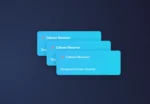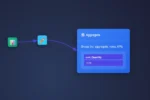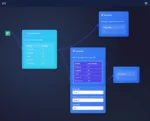
by tyler garrett | Jun 23, 2025 | Data Visual
In today’s fast-paced, hyper-connected media environment, the volume of news and sentiment information can be overwhelming—yet harnessing insights within this data is more critical than ever. Decision-makers looking to remain agile and informed require innovative solutions to extract actionable intelligence from a sea of data. Enter news analytics visualization platforms—cutting-edge tools which leverage advanced data analytics techniques to aggregate, analyze, and visualize media sentiment in real-time, enabling organizations to rapidly respond to trends, manage brand reputation, and capitalize on emerging opportunities. Whether you’re managing a global enterprise or driving data-driven innovations in your organization, understanding the power behind media sentiment tracking platforms and visualization can deliver significant strategic advantages.
Why News Analytics and Sentiment Visualization Matters to Decision Makers
Media sentiment directly impacts brand reputation, consumer behavior, investor perceptions, and even policy formulation. As information spreads instantly across thousands of news outlets and social media platforms worldwide, executive leaders can no longer afford to ignore news analytics. Sentiment tracking solutions capture the nuanced emotional tone behind media coverage, empowering strategic decision-making by presenting clear visual insights into how audiences are responding to organizational activities.
An effective sentiment tracking platform fuses data aggregation methods and machine learning analytics to deliver meaningful visual narratives. It helps executives easily track evolving media coverage, measure the effectiveness of campaigns, and identify opportunities or threats swiftly. For businesses experiencing high-stakes events—such as a product launch, corporate merger, or crisis management situation—visualizing media sentiment acts as a powerful compass guiding informed action and argumentation.
As we’ve detailed in The Art and Science of Data Storytelling, decision-makers require intuitive visualizations that clearly communicate complex insights. News analytics visualizations sharpen strategic planning, stakeholder alignment, and risk mitigation by providing powerful, engaging imagery to facilitate faster, collaborative decisions at every level of the organization.
Key Components of Effective Media Sentiment Tracking Platforms
An impactful news analytics visualization platform combines multiple technologies, algorithms, and methodologies seamlessly. To deliver optimal benefits, key components must be thoughtfully integrated and implemented:
Data Collection and Aggregation
Effectively collecting and processing massive volumes of media data is foundational to successful sentiment tracking. News analytics applications rely on scalable data architectures, often involving robust data pipelines capable of real-time aggregation, cleansing, and transformation. Sophisticated data pipeline dependency graph visualization techniques aid developers in managing these complex data integration tasks clearly and efficiently.
Natural Language Processing (NLP) and Sentiment Analysis
Advanced NLP capabilities enable automated extraction of sentiment indicators and audience emotion from text-heavy news content. Platforms employ NLP algorithms like sentiment classifiers, named entity recognition, and opinion mining models to accurately gauge emotional intent behind news reports, tweets, and social media mentions at scale. Best-in-class NLP engines provide granular sentiment scores capable of distinguishing nuanced emotional context, fueling more precise sentiment tracking insights.
Visualization Dashboards and Interactive Explorations
Modern sentiment tracking platforms employ dynamic dashboards, drill-down features, and interactive graphs to make insights easy to consume for executives. Techniques such as drill-down navigation in hierarchical visualizations ensure information relevance for executive users, facilitating exploration from aggregated sentiment levels down to individual articles, regions, or topics. Through well-designed dashboards, leaders quickly grasp sentiment dynamics, identify influential narratives, and pinpoint drivers behind positive or concerning sentiment shifts.
Real-Time Monitoring and Data-Driven Alerting
One significant advantage of leading media sentiment tracking platforms is their capability to operate at the speed of news cycles. Real-time analytics pipelines, continuous data ingestion strategies, and automated AI-driven alerts empower decision-makers to respond proactively rather than reactively. Utilizing near-instantaneous sentiment tracking, companies can rapidly mitigate potential crises or capitalize on emerging opportunities as they unfold across digital and traditional news outlets alike.
Furthermore, advanced sentiment analytics platforms use sophisticated methods such as jitter visual implementations, which provide clarity about crowded or overlapping data points in high-frequency real-time visualizations. Our article on jitter implementation for overlapping data points visualization outlines how these techniques ensure quick comprehension amidst dense real-time data updates, enabling more informed decisions under time-sensitive conditions.
Businesses hiring specialists—such as Dev3lop’s own expert team offering Microsoft SQL Server consulting services—ensure structured storage solutions that can scale their real-time operations seamlessly. Better data infrastructure means improved efficiency in sentiment tracking operations, immediate data accessibility, and reliable performance across multiple data workloads.
Strategic Governance and Cross-Unit Collaboration for Sentiment Analytics
Stakeholders across different business units—from marketing to investor relations—often utilize sentiment insights distinctly. Therefore, a unified understanding demands structured governance frameworks around sentiment analytics environments. Implementing federated data governance across diverse business units allows organizations to balance centralized strategic oversight with local business-unit-driven sentiment exploration and custom analyses, readily coordinating organizational responses around shared sentiment data.
Sentiment tracking benefits are maximized when there’s clear alignment on terminology, platform usage policies, and established methodologies for sentiment analysis across the enterprise. With federated governance structures, organizations effectively eliminate departmental siloes, enhancing strategic clarity through cross-unit collaboration and knowledge exchange around sentiment-based insights.
For example, deploying an automated sentiment impact analysis model positions your teams ahead when significant changes occur within your data ecosystem. Our guide on impact analysis automation for upstream schema changes demonstrates how automating analytical pipelines bolsters reliability and accuracy—ensuring consistent media sentiment tracking even amid changes and growth.
Future Innovations: AI-Driven Sentiment Analytics and Predictive Capabilities
Looking forward, ongoing advancements in artificial intelligence and machine learning mean that future sentiment tracking platforms may transcend reactive measurement, becoming impressively predictive. Integrating sentiment analytics with predictive modeling algorithms positioned within larger advanced analytics ecosystems can forecast sentiment dynamics and news trends, positioning enterprises to anticipate conditions before mainstream coverage fully develops.
Platforms harnessing predictive analytics features can proactively alert executives to audience reactions, develop preemptive communication strategies during product launches, or anticipate investor sentiment shifts around financial markets. Combined with AI-driven automated recommendations, these predictive capabilities open the door toward sophisticated strategic sentiment deployments.
Embracing AI-powered predictive analytics trends contributes directly to sustained competitive advantage, solidifying future-focused sentiment tracking platforms as necessary technology investments. Organizations committed to agile, informed decision-making must prioritize these strategic innovations, enabling leadership to anticipate and rapidly adapt to evolving media perception scenarios proactively.
Conclusion: Harnessing Sentiment Visualization as a Strategic Imperative
As media’s influence on corporate, consumer, and investor landscapes escalates rapidly, the strategic importance of leveraging media sentiment tracking platforms grows accordingly. Visualization solutions not only enhance organizational agility and informed responsiveness but also empower in-depth stakeholder communication, crisis mitigation, and decisive action across abundant scenarios.
Integrating technologies such as NLP, real-time analytics engines, robust data governance frameworks, and sophisticated visualization methods transform overwhelming media sentiment data into actionable strategic resources. By prioritizing news analytics visualization, organizations ensure responsiveness to risks, opportunities, and changing market perceptions efficiently and effectively. Ultimately, media sentiment visualization is not just beneficial—it’s an essential capability for modern data-informed strategists.
Thank you for your support, follow DEV3LOPCOM, LLC on LinkedIn and YouTube.

by tyler garrett | Jun 21, 2025 | Data Visual
In the ever-evolving landscape of the construction industry, project managers and executives face mounting pressures to optimize project timelines and budget utilization. The challenges are compounded by increased project complexities, vast data sources, and tight deadlines. Fortunately, advanced analytics powered by intuitive business intelligence tools now revolutionize how construction enterprises track projects. Leveraging robust analytics methods like interactive dashboards, organizations transition from manually intensive check-ins toward actionable insights delivered through powerful visualizations. In this insightful exploration, we demonstrate how construction project analytics through timeline and budget visualization empower your organization to proactively identify bottlenecks, streamline resource allocation, and achieve strategic clarity to hit milestones with precision and accuracy.
Understanding the Importance of Construction Project Analytics
The construction industry deals inherently with uncertainty and constant change. Project delays, budget overruns, scheduling disputes, and resource constraints frequently impede efficiency and consume financial resources unnecessarily. Project analytics analyzing timeline and budget visualization tools allow stakeholders and management teams to grasp ongoing project status at a glance—often catching critical issues well before they result in expensive delays or missed deadlines.
By integrating data analytics practices into project management processes, firms can better anticipate and control the evolving dynamics within construction projects. Imagine having immediate insight into how budget variations might influence completion timelines or visibility into precise timeframes where labor resources become stretched thin. Using advanced analytics such as non-Euclidean visualization techniques, project managers can more intuitively observe the interplay between project variables that might not be evident in traditional table-based reporting.
Advanced analytics enable the construction industry to employ predictive models to foresee risks and validate planning assumptions. Timeline and budget visualization is foundational, centralizing crucial information and helping your team pivot swiftly and confidently when conditions change—empowering stakeholders to ensure projects meet delivery targets and stay aligned with overall financial goals.
Leveraging Timeline Visualizations for Improved Project Transparency
Effective timeline visualization provides unmatched clarity regarding project deadlines and milestones. Often, traditional project management systems fall short, relying heavily on static Gantt charts that do not respond dynamically to planning changes or data fluctuations. Through analytics-driven timeline visualization supported by modern business intelligence platforms, such as through powerful Power BI consulting services, decision-makers gain comprehensive insights into real-time project progress and possible delays.
Interactive timeline visuals revolutionize project transparency by enabling management and teams to drill down into specific timeframes, filter departmental responsibilities, and quickly understand critical path tasks. By incorporating these innovative strategies into your timeline management processes, any project timeline adjustments become an opportunity—for faster reprioritization, dynamic expectation management, and efficient resource balancing.
Moreover, implementing techniques rooted in interactive visualization, like interactive cross-filtering across multi-chart dashboards, allows construction executives and stakeholders to isolate and scrutinize potential impacts stemming from time-critical tasks quickly. Facilitating this granular visibility dramatically boosts decision-making confidence, enhancing team cohesion and morale by aligning stakeholder expectations clearly and transparently.
Harnessing Advanced Budget Visualizations to Control Costs
Budget overages represent one of the construction industry’s most persistent challenges. The ability to understand budget constraints dynamically can make or break a project’s successful outcome. Advanced dashboard visualizations that comprehensively illustrate financial resource allocation, spending patterns, and budget versus actual comparisons enhance stakeholder confidence, reduce surprise budget overruns, and improve overall financial planning.
Moving beyond basic financial reporting, powerful visualization solutions offer capabilities like predictive forecasting and detailed tracking of budget deviations. Advanced analytics techniques, particularly those described in our article regarding storage versus compute trade-offs, further optimize the processes behind storing, processing, and visualizing large-scale financial project data. From defining the initial budgeting allocations to dynamically pinpointing at-risk expenditures during the project’s lifecycle, these budget visualization tools will empower decision-makers to control and adjust financial plans proactively.
Customizable visuals and interactive charts further empower stakeholders. Color-coded heatmaps, dynamic bar charts with drill-down features, and up-to-date budgetary KPIs transform dense financial data into highly actionable insights—making complex and cumbersome budget analytics understandable and usable by construction executives and project teams alike.
Integrating Data Warehousing and Advanced Analytics in Construction
Construction organizations generate massive data volumes from widely dispersed sources—materials procurement, financial invoices, site activity logs, schedules, and labor timesheets, among others. To fully leverage timeline and budget visualization, businesses must consider implementing centralized data warehousing practices. Forward-thinking organizations are already transforming their data environments, as explained in our detailed guide on data warehousing for improved analytical efficiency.
Establishing robust data warehouse ecosystems provides key strategic benefits in developing comprehensive project analytics capabilities. Centralized data platforms enable real-time integrations with analytics tools, establish single-source-of-truth accuracy, and facilitate the creation of enterprise-wide KPIs and reporting governed by canonical data models. By adopting canonical data model development methodologies, your organization ensures consistency and accuracy in analytical outputs, significantly enhancing decision-maker trust and team alignment.
Flexible cloud data warehousing with analytics functionality also enables construction organizations to rapidly adapt to changing business conditions. With live, up-to-date access to performance metrics, businesses can effectively respond to changes in scope, resource requirements, or market dynamics. Moreover, adopting adaptive processing capabilities such as adaptive parallelism in data processing ensures scalability and speed, supporting real-time insights into data-intensive construction projects.
Driving Actionable Insights with Visualization Innovation
Visualization innovation gives construction leaders the foundational tools to effectively align timelines and budget outcomes with organizational strategy. Construction analytics dashboards transform complex data sources into easily digestible visual cues, bridging the gap between raw data and impactful decisions. Beyond traditional bar graphs and budget reports, sophisticated analytic tools empower construction organizations to navigate ambiguities, surface hidden risks, and seize opportunities proactively.
Unconventional yet highly effective visualization strategies such as advanced word clouds designs also equip stakeholders to quickly identify trending negotiation points, market participant feedback, or recurring internal bottlenecks. These seemingly simple tools can drive powerful insights when integrated thoughtfully into an organization’s data visualization strategy.
Construction organizations committed to analytical excellence position themselves ahead of competitors. They gain the ability to rapidly translate projected costs, schedules, and project outcomes into valuable strategic insights. With superior analytics through timeline and budget visualization at your fingertips, operational decisions become precise, proactive, adaptive, and strategically grounded—ensuring optimal use of resources, effective risk mitigation, and sustained competitive advantage.
Conclusion: Advance Your Construction Project Analytics Journey
Complex construction projects demand innovation-driven visualization capabilities and advanced analytics solutions to manage timelines and budgets effectively. Visual analytics not only drastically improve transparency, efficiency, and accuracy but also boost the resilience and agility needed to navigate industry challenges and competitor dynamics.
To achieve authoritative positioning and operational excellence, construction organizations must continuously innovate and proactively implement advanced analytics strategies backed by data warehousing expertise. Timeline and budget visualization analytics represent significant strategic opportunities—empowering tangible business transformation while harmonizing management teams, stakeholders, and frontline operations.
Are you ready to leverage cutting-edge Power BI consulting services and visualization insights to elevate your construction analytics strategy? Begin your journey today toward future-proof project analytics and industry leadership.
Thank you for your support, follow DEV3LOPCOM, LLC on LinkedIn and YouTube.

by tyler garrett | Jun 21, 2025 | Data Visual
In the streaming media industry, understanding viewer behavior through data-driven analytics isn’t just advantageous; it’s essential to sustain competitive advantage. Faced with unprecedented growth and fiercely competitive markets, companies must leverage advanced visualization techniques to analyze content consumption patterns effectively. These actionable insights offer a powerful strategic edge by uncovering precisely what engages audiences, how viewing habits evolve, and informing decisions ranging from content investments to marketing initiatives. In this intricate dance of data, analytics, and visualization, each component plays a critical role, aligning business intelligence with user experiences to unlock unparalleled strategic value.
The Power of Analytics Visualization for Streaming Media
With providers competing heavily for subscribers’ limited attention spans, streaming media companies benefit enormously from harnessing data analytics visualization. Visualizing content consumption patterns enables media strategists, business analysts, and decision-makers to identify emerging trends quickly, optimize viewer engagement strategies, and strategically allocate resources in a highly competitive marketplace. Leveraging sophisticated data visualization and analytics tools effectively transforms complex user behavioral data into digestible insights, significantly streamlining the decision-making process and enhancing operational efficiencies.
Effective analytics visualization helps content providers detect hidden patterns in audience interactions—revealing viewer preference segments and behavior trends over time. Integrating data-driven visualization into your analytical workflows enables multiple stakeholders to quickly assess content performance metrics and user engagement indicators. By centralizing streaming media analytics into visual-centric platforms, business leadership can rapidly identify trends such as drop-off points, average viewing habits, and content affinity groups, thus maximizing engagement and subscriber retention.
Key Visualization Patterns in Streaming Media Analytics
Organizations focused on delivering streaming media content need powerful visualization solutions that meaningfully represent complex viewer consumption information. Let’s explore several critical visualization patterns particularly suited to analyzing streaming media analytics data effectively.
User Behavior Flow Charts
Behavior flow charts offer crucial insights into content consumption by visually capturing user interactions, session durations, and sequential behaviors. Stakeholders can quickly spot common user paths, bottlenecks, or drop-offs, fueling informed content investment and strategizing decisions. Utilizing visualization to map these pathways directly reveals actionable analytics, enabling organizations to optimize content curation and recommendation strategies precisely, enhancing user retention and identifying additional monetization opportunities. Leveraging advanced visualization solutions allows a deeper exploratory view into streaming platforms, revealing highly granular behavior patterns that standard dashboards often miss. This approach exemplifies capabilities discussed further in our analysis on visual decision support systems beyond standard dashboards.
Heatmap Visualization Patterns
Heatmap visualizations adeptly highlight viewing intensity for specific content items, defined times of day, or demographic preferences, presenting stakeholders with intuitive representations of massive datasets at-a-glance. With real-time heatmaps, media strategists pinpoint precisely when viewers are most actively engaging and with what type of content, optimizing programming schedules for highest viewer retention and satisfaction. Accurate interpretation of heatmap outputs is significantly enhanced with integration of advanced predictive models—an approach demonstrated in our impact of AI on data engineering workflows article. Data visualization solutions enriched with predictive analytics effectively forecast future content performance trends, enabling streaming media companies to boost competitive capabilities.
Cohort Analysis Charts
Cohort analyses group viewers into distinct segments based on shared attributes or interaction timelines, clearly visualizing engagement and retention patterns among specific viewership cohorts. Such visualizations equip decision-makers with the insights required to craft personalized campaigns effectively, enhancing viewer experiences through targeted content recommendations, fostering more personalized interactions, and ultimately driving consumer loyalty and sustained growth. Robust data visualization solutions combined with advanced analytics further accentuate the accuracy and relevance of cohort-centric insights, providing decision-makers with clarity about targeted audience segments and associated performance drivers.
Implementing Streaming Media Visualization Patterns
Effectively applying these visualization patterns to real-world scenarios in streaming media analytics requires both technical savvy and strategic foresight. To build and maintain advanced visualization capabilities, it’s often necessary to establish comprehensive, automated data ingestion pipelines supported by robust software architectures and custom analytics algorithms.
One effective approach includes deploying efficient pipeline orchestration tools, such as those highlighted in our pipeline orchestration comparison of Airflow, Prefect, and Dagster. Selecting a suitable orchestration platform enhances data pipeline efficiency and reliability, significantly improving data quality for advanced streaming visualization applications.
Meanwhile, understanding dimension alignment represents another crucial aspect. Our detailed exploration on dimension conformity enforcement in data integration highlights the significance and techniques of managing consistent data definitions effectively to deliver quality analytics visualizations that accurately reflect viewer behaviors.
Safeguarding Viewer Privacy in Visualization Analytics
Comprehensive data visualization greatly enriches decision-making capabilities; however, it also elevates concerns around viewer privacy and data protection. Maintaining compliance with stringent privacy regulations demands thoughtful implementation of privacy-preserving tools and methodologies in your analytics framework. Implementing advanced analytics frameworks integrated with privacy considerations, such as privacy-preserving record linkage techniques, ensures viewer anonymity while deriving valuable content engagement insights.
Furthermore, incorporating responsible dataset sampling techniques into visualization workflows optimizes processing efficiency and enhances viewer privacy. Our strategic overview on dataset sampling techniques for processing optimization provides insights into balancing analytics robustness with user privacy imperatives, allowing visualization analysts to protect sensitive viewer data while delivering insightful results.
Future-Proofing Streaming Analytics Visualization Pipelines
As viewer habits evolve and content delivery models advance rapidly, analytics visualization pipelines must stay agile and future-proofed. Ensuring a consistent, structured framework backed by continuous integration (CI/CD) practices facilitates agility when deploying new visualization logic or applying data transformations swiftly and reliably. Learn how to strategically streamline content analytics visualization pipelines by exploring our authoritative guide on building your CI/CD pipeline.
Moreover, adopting continuous integration more comprehensively within your analytics workflow also ensures consistent deployment of transformation logic. Our detailed article on continuous integration for data transformation logic introduces essential best practices and insights that help mitigate risks in data visualization projects, significantly enhancing visualization agility and responsiveness to rapidly changing viewer trends.
Lastly, incorporating artificial intelligence (AI) and machine learning (ML) techniques into visualization capabilities can greatly amplify analytical insights. Techniques such as named entity recognition (NER)—thoroughly explained in our guide on using Python for NER, an NLP subtask—can assist visualization analysts in labeling and categorizing diverse viewer engagement content accurately and rapidly, boosting analytics efficiency and content classification accuracy.
Partnering with Experts for Visualization Success
Implementing effective streaming media visualization strategies demands a deep understanding of modern analytics methodologies and sharp technical expertise. Collaborating with experienced technical strategists specialized in data engineering, high-performance analytics pipelines, visualization techniques, and modern web technologies like Node.js greatly enhances your ability to achieve actionable visualization results. At Dev3lop, our specialized expertise and customized services support your end-to-end analytics needs, from Node.js consulting services to large-scale analytics architecture. Our rich experience includes handling large-scale data challenges—detailed in our insightful data engineering case study scaling to handle 1 billion events daily.
By leveraging our extensive strategy-driven approach and comprehensive technical solutions, Dev3lop positions your streaming media analytics for sustained competitive advantage. We help you unlock powerful visualization-driven insights, accelerating data-driven decisions that elevate viewer experiences.
Effective visualization analytics translates streaming viewer habits and preferences into actionable intelligence. Integrating smart visualization practices strengthens your organization’s decision-making and sets a platform for future innovation, growth, and competitive success.
Tags: Streaming Analytics, Visualization Patterns, Media Analytics, Data Visualization, Viewer Behavior Analytics, Content Consumption Analytics
Thank you for your support, follow DEV3LOPCOM, LLC on LinkedIn and YouTube.

by tyler garrett | Jun 21, 2025 | Data Visual
When it comes to the global food supply chain, ensuring the safety, quality, and traceability of what we consume has never been more critical. With food-related recalls costing millions and negatively impacting brand reputation, businesses cannot afford complacency. The good news is that advanced food safety analytics, powered by next-generation data strategies and intelligent software solutions, are revolutionizing contamination tracking efforts across complex supply chains. Through real-time tracking and predictive analytics, companies can proactively identify, respond to, and mitigate contamination risks, turning potential vulnerabilities into competitive advantages. In this article, we’ll break down how innovative analytics approaches transform food safety management, highlight measurable business benefits, and provide decision-makers with key insights that enable smarter, safer, and more transparent food supply chains. Whether your company is building a strategic single source of truth or enhancing consumer trust, effectively deploying data-driven insights makes all the difference.
The Importance of Real-Time Contamination Tracking in Supply Chains
Effective contamination tracking is not only crucial to minimizing public health risks, but also has major implications for brand trust, regulatory compliance, and operational efficiency. Picture a contamination incident escalating rapidly—without real-time analytics and dynamic visibility into the supply chain, businesses face enormous challenges identifying the source and containing the damage promptly. Food safety analytics bridges this gap by utilizing automated data pipelines, sophisticated IoT integrations, and advanced spatio-temporal indexing capabilities that pinpoint contamination sources swiftly and precisely.
These advanced techniques offer significant economic advantages, too; according to recent industry reports, timely identification of contamination sources can reduce recall-related costs by over 50%. Companies adopting robust analytics platforms, such as cloud-based solutions enabled through experienced partners well-versed in GCP consulting services, can quickly understand logistical data, batch records, and trace products back to their origins. This empowers stakeholders to proactively mitigate risks before disruptions reach customers and regulators, thus protecting brand reputation, maintaining compliance, avoiding costly recalls, and most importantly, safeguarding consumers’ health. In today’s dynamic and complex food ecosystem, a company’s ability to rapidly detect and respond to contamination issues is paramount for long-term business resilience.
Leveraging Advanced Data Pipelines for Enhanced Traceability
At its core, effective food safety analytics relies heavily upon dynamic data pipelines that seamlessly ingest, process, and analyze data collected throughout the entire supply chain. As food moves through different stages—from farms and warehouses, to distribution centers and retail points—intelligent software solutions engineered to handle data branching patterns ensure greater transparency, accountability, and risk mitigation.
The innovative approach of employing automated testing methods within pipelines, such as canary deployments, assures high-quality data accuracy and enables seamless detection of quality standards or contamination red flags early in the process. Establishing advanced frameworks and integrating sophisticated analytics facilitates not only the quick identification of problems but also offers deep insights that previously might have gone unnoticed. Utilizing analytics systems built for comparative analysis—such as small multiple design patterns—business stakeholders can rapidly compare contamination incidents across various locations, facilities, or product lines to pinpoint systemic vulnerabilities and improve future handling protocols.
Businesses embracing these state-of-the-art analytics and data pipeline methodologies hold a substantial competitive advantage in the industry. With enhanced traceability, they provide clear proof-of-provenance, elevate consumer trust, and enable measurable operational improvements. Ultimately, companies making these investments in food safety analytics substantially reduce supply chain risks while simultaneously strengthening their market positioning.
Predictive Analytics for Proactive Risk Management and Prevention
Reacting swiftly in times of contamination is critical; however, remaining proactive and predictive is where businesses gain a powerful competitive edge. Predictive analytics technologies leverage machine learning algorithms, historical contaminant data, and real-time sensor inputs to forecast when, where, and under what conditions contamination might likely occur. This predictive capability empowers organizations to mitigate potential quality or health hazards proactively, rather than waiting until an adverse event occurs.
Forward-thinking companies are increasingly working with expert software consultancies to develop customized predictive models tailored specifically for their operational context. Making the decision between adopting custom vs off-the-shelf software is pivotal, and leveraging a technical strategy partner experienced in advanced analytics can unlock competitive advantages. These predictive capabilities enable better decision-making, ensuring contamination risks are minimized by anticipating events rather than simply responding after the fact.
Analytics programs implemented with proactive detection algorithms provide increasingly accurate, actionable insights over time. They establish baselines, detect anomalies more effectively, and predict contamination events with higher confidence. Furthermore, comprehensive safety analytics become invaluable assets when navigating regulatory environments, insurance negotiations, or consumer transparency campaigns. With predictive analytics at the forefront of corporate practices, companies demonstrate leadership, strengthen brand reputation through reliability, and reinforce safety as a core strategic value.
Ensuring Data Quality and Accessibility as Cornerstones of Success
No matter how powerful your analytics capabilities are, the value derived from analytics ultimately depends on the quality and integrity of the data itself. Businesses need robust data quality testing frameworks to monitor, validate, and remediate incoming data continuously. Reliable data provides the crucial foundation required for meaningful analytics insights, real-time contamination tracking, and predictive risk modeling. Neglecting data quality can severely compromise analytics results, eroding trust both internally and externally.
Moreover, presenting those insights effectively and clearly to all stakeholders is crucial. Deploying inclusive analytics solutions and visualizations—including best practices for creating accessible data visualizations—helps everyone within the organization, regardless of previous technical proficiency, understand analytics insights and translate them into practical, timely decisions. Investment in analytics education and training, leveraging reputable institutions such as state-of-the-art programs seen at The University of Texas at Austin, further enables data-driven culture growth across the organization.
By focusing on both data integrity and insightful presentation, companies build a resilient analytics infrastructure. They reassure stakeholders, optimize decision-making effectiveness at all levels, and enhance operational transparency. Strengthening these analytics capabilities significantly improves food supply chains—driving higher performance, customer satisfaction, and public safety standards across the entire industry.
The Path Forward: Embracing Innovation in Food Safety Analytics
As supply chain complexities increase and safety standards become more stringent, innovation in food safety analytics will continue to offer substantial competitive advantages to forward-thinking companies. Successfully navigating issues like data management complexities, robust prediction models, or resolving technological roadblocks encountered—such as the often cited error message “error 1084 this service cannot be started in safe mode”—will further empower organizations to fully capitalize on industry-leading insights.
Ultimately, leveraging strategic analytics technologies paired with industry expertise creates nimble, proactive organizations. Such businesses can withstand contamination events, regulatory shifts, and consumer health concerns confidently. Proactive analytics-driven companies can rapidly adapt processes, optimize consumer safety measures, reduce compliance complexities, and maintain strong brand integrity. Important decisions today about adopting advanced analytics tools and techniques lay the foundation for sustainable innovation in tomorrow’s food safety landscape.
To seize the potential benefits and confidently accelerate your analytics strategy for impactful food safety compliance, it’s time to collaborate with expert analytics consulting partners who specialize in pioneering next-generation systems, dedicated insights, and strategic technology alignment.
Thank you for your support, follow DEV3LOPCOM, LLC on LinkedIn and YouTube.

by tyler garrett | Jun 21, 2025 | Data Visual
The intersection of archaeology and cutting-edge data visualization is revolutionizing how historical sites are explored, analyzed, and preserved. In an era where technological innovation propels insights, intuitive archaeological data visualization tools empower decision-makers to better understand and manage priceless cultural heritage. Imagine transforming static site maps and dense datasets into compelling visual narratives, enabling researchers and stakeholders to interactively navigate ancient ruins, explore excavation data, and visualize historical contexts more dynamically than ever before. At the forefront of this digital renaissance, sophisticated software tools leverage analytics, interactive dashboards, cloud architecture, and powerful backend solutions, such as those developed via advanced Node.js consulting services, to boost efficiency and deepen analytical capabilities. Integrating archaeology and digital technologies enhances preservation strategies, drives innovative research, and fosters data-driven insights that modern organizations and institutions depend on daily. Let’s navigate together through the visionary tools reshaping archaeological research and historical preservation strategies.
Understanding the Need for Effective Archaeological Visualizations
The discipline of archaeology generates extensive quantitative and qualitative data—detailed inventories of artifacts, spatial coordinates from excavation sites, typological analyses, stratigraphy layers, and carbon dating records. Historically, interpreting these vast datasets required painstaking, manual aggregation, processing, and detailed textual analyses. Today, however, stakeholders face growing pressure to swiftly interpret data into insightful narratives for public consumption, research, fundraising efforts, and crucial preservation decisions. With this paradigm shift, sophisticated data visualization emerges as the linchpin for effective archaeological communication, reducing complexity and facilitating comprehension for broader audiences.
By applying visualization best practices, archaeologists can transform raw data into interactive experiences, fostering a greater appreciation and enhanced understanding of historical sites. Tools incorporating aggregated analytics akin to those found in the SQL GROUP BY aggregation methods empower researchers to summarize artifact counts, spatial clustering, or temporal patterns effectively. Interactive dashboards built on powerful data infrastructure allow users to delve deeper into specific archaeological questions, such as the spatial relationships among artifacts or the chronological progression of a site’s occupation.
Additionally, visualizing archaeological data provides greater transparency in research and preservation, helping institutions bolster advocacy, secure funding, and align diverse stakeholders. Indeed, effective visualization has transitioned from a nice-to-have to a strategic requirement, driving decision-making processes across archaeological and heritage management sectors.
Leveraging Advanced Technologies: Interactive Dashboards and Spatial Analytics
Interactive dashboards and advanced spatial analytics represent new frontiers in archaeological analysis, dramatically reshaping traditional research approaches. Solutions that employ progressive web applications, interactive maps, and spatial analytical methods—such as geospatial data systems supported by Node.js backend frameworks—are enabling deeper site investigation and enhanced interpretability of archaeological data.
Progressive data loading, a critical advancement discussed in our recent guide, Progressive Data Loading for Responsive User Interfaces, allows historians and archaeologists quick access to archaeological data visualizations, streamlining the analytical process and improving user engagement. Interactive mapping layers provide dynamic visual contexts, allowing researchers to match historical records against physical spatial data to uncover previously invisible relationships and patterns. Furthermore, responsive dashboards deliver data insights efficiently, no matter the underlying dataset complexity or dataset size.
Advanced analytic techniques, such as the utilization of SQL’s logical operators (thoroughly detailed in our article Harnessing the Power of Logical Operators in SQL), empower archaeologists to query robust datasets effectively, filtering spatial data to reveal complex site patterns or artifact distributions. By embracing cloud-based analytical platforms with event-driven architectures, archaeologists expedite data-driven decision-making and progressive insight discovery, fostering deeper analytical understanding and preserving scientific rigor.
Seamless Integration of Legacy Archaeological Data and Modern Visualization Tools
Despite the massive benefits contemporary visualization tools offer, archaeological projects frequently face challenges surrounding legacy data integration. Historical datasets compiled over decades—sometimes recorded manually or stored in outdated formats—pose integration hurdles for modern analytical and visualization platforms. Strategic innovation inside legacy environments becomes vital, as explained in our insightful piece on how to innovate inside legacy systems without replacing them. Applying thoughtful modernization methodologies enables archaeologists and heritage managers to seamlessly integrate historical data into contemporary tools, retaining essential context while unlocking new analytical possibilities.
Implementing a hybrid data architecture guided by proper inter-company data sharing governance frameworks ensures secure, compliant, and efficient transfer of historical datasets, elevating data transparency and traceability across institutional boundaries. By establishing best practices for Change Data Capture (CDC) implementation—a topic extensively explored in our article on Change Data Capture topologies for event-driven analytics—archaeologists can systematically migrate legacy systems into modern analytical environments without significant disruption or loss.
Utilizing this smart modernization approach, site managers and analysts enhance visibility and accessibility of archaeological data, achieving insightful historical analyses that benefit academic research, stakeholder interests, and public engagement alike.
Maximizing Return on Investment with Innovative Data Visualization
Financial sustainability is an essential consideration within archaeology; therefore, investing strategically in visualization tools should yield measurable returns. Visualization technologies significantly enhance stakeholder understanding, driving funding, guiding policymaking, and improving site management—ultimately benefiting organizations’ strategic and financial goals. In fact, archaeological institutions that embrace data engineering trends and innovations noted in our recent future-focused article Boost Profitability with Data Engineering Trends in 2025 position themselves for enhanced efficiency, improved outcomes, and stronger financial health.
Thoughtful solutions like Tableau, which offer flexible visualization capabilities adaptable across diverse archaeological datasets (review our detailed breakdown of Tableau pricing), allow organizations to rapidly demonstrate analytical ROI by reducing response times, improving decision accuracy, and facilitating effective communication. Moreover, institutions gain financial insights enabling better site management, resource allocation, and targeted project development—strengthening the case for funding bodies and governmental support agencies.
Strategically adopting powerful data visualization solutions combined with rigorous data analytics best practices ensures optimal value extraction from archaeological data, improving financial sustainability, enhancing stakeholder engagement, and driving forward mission-critical objectives.
Future Perspectives: Transforming Archaeology with Data-Driven Innovation
The future of archaeological research and heritage site management hinges significantly on robust digital innovation and data-driven practices. Historical site analysis tools increasingly rely on sophisticated backend technologies such as Node.js and tailored analytical systems to enable responsive, real-time visualizations and deeper insights. On the horizon are untapped possibilities—virtual reality integrations, augmented reality explorations, machine-learning-driven artifact recognition and predictive site analysis—that promise significant breakthroughs for archaeological research and public engagement.
Collaborative platforms and a data-focused culture shift within archaeology facilitate broader data accessibility, improved analytical workflows, and richer historical storytelling. Utilizing expert software consulting partnerships, organizations can strategically adapt and rapidly integrate these emerging technologies, placing archaeological research at the forefront of digital innovation. This innovative infrastructure, supported by efficient backend frameworks like Node.js, enables seamless scalability and flexibility, crucial for future-proofing archaeological research and visualizations efforts.
Ultimately, the adoption and implementation of sophisticated archaeological data visualization tools provide the foundation for remarkable innovation and transformative outcomes. Decision-makers equipped with modern tools foster responsible site management practices, amplify public engagement, improve research transparency, and ensure long-term preservation—establishing archaeology as a model sector in technology-driven innovation and insightful analytics.
Thank you for your support, follow DEV3LOPCOM, LLC on LinkedIn and YouTube.

by tyler garrett | Jun 21, 2025 | Data Visual
In today’s digital-driven landscape, libraries and information centers are more than just repositories of knowledge—they’re powerful hubs of analytical insight. With extensive data accumulated through digital catalogs, borrow history, user research behaviors, and digital access information, libraries hold the key to understanding intricate information usage patterns. By visualizing these patterns, we can revolutionize librarianship and decision-making, enabling libraries to effectively curate their resources, optimize their operational efficiency, and better meet user needs. Let’s dive into how library science analytics can unlock transformative insights, propel strategic resource allocation, and reveal the hidden story within your data through intelligent visualization techniques.
Harnessing Analytics to Decode Information Usage Patterns
Traditionally, libraries relied primarily on physical checkout volumes or anecdotal observations to gauge resource utilization. However, the digital age has introduced sophisticated analytics software that significantly expands this scope. With the aid of powerful analytics tools—particularly cloud solutions like AWS which empower scalability and security—analyzing complex data sets is more accessible and efficient than ever. These advanced platforms provide opportunities to track digital resource adoption, identify seasonal trends in user behavior, and gain granular insights into user interaction with online databases or digital resources. By leveraging expert-guided platforms such as AWS consulting services, libraries can adeptly manage their analytical strategy, scaling dynamically as data grows, and extracting data-driven insights with minimal friction.
Librarians and administrators today can employ visualization tools to decode information usage in intuitive dashboards. Interactive dashboards displaying key usage metrics—for instance, peak utilization times, most commonly accessed materials or databases, and user demographics—help administrators proactively design impactful acquisition strategies. Visualization shifts the narrative from raw numbers toward insightful, understandable, and actionable representations of user behaviors, effectively optimizing library resource management and aligning decisions with genuine user needs.
The Power of Visualization – Transforming Data into Actionable Insights
Visualization bridges the gap between raw analytics and human-perceived intelligence. Leveraging well-built processes derived from data visualization methodologies, libraries can better interpret patterns, diagnose operational inefficiencies, and design interventions that enhance user engagement. Following proven frameworks, like our visualization heuristic evaluation framework, ensures visualization metrics not only accurately track informational usage but also adhere to best-practice standards for interpretability and usability. This systematic approach creates impactful visual storytelling, empowering libraries to communicate complex data clearly to stakeholders, regardless of their technical proficiency.
Interactive visualization platforms further enrich libraries’ analytical capacity, allowing users at varying skill levels to explore data independently and intuitively. Visualization makes abstract usage data tangible, enhancing decision-making for library resource planning, marketing digital materials, adjusting operational hours, or designing targeted services. Libraries that leverage interactive data exploration—following best practices such as those outlined in our article on interactive tour design for new visualization users—empower their staff to identify trends and patterns effortlessly. By enabling data-driven decisions, visual analytics dramatically elevate organizational agility, responsiveness, and service quality.
Predictive Analytics: Anticipating Needs with Demand Forecasting
While historical usage patterns shed critical insights into past and current library operations, predictive analytics introduces even greater transformative possibilities. Utilizing forecasting tools grounded in robust statistical models and machine-learning algorithms positions libraries proactively, optimizing resource allocation, inventory management, and collection building decisions. For detailed approaches and best practices, visit our resource on optimizing inventory levels through demand forecasting.
Integrating strategic demand forecasting into library management systems significantly enhances operational effectiveness. Predictive analytics helps librarians anticipate new books or digital materials that users will desire in the near future—taking into account historical usage behaviors combined with current search trends curated through analytics. This proactive approach guides librarians when deploying finite funding resources and allows libraries to meet evolving demands in a timely and impactful manner. By effectively anticipating shifts in information usage patterns, library administrators can position their institutions as highly responsive, forward-looking, and strategically innovative.
NLP and Text Analytics: Understanding Users’ Information Seeking Behavior
Beyond numeric usage data, textual and linguistic analytics open another powerful avenue for libraries. Natural Language Processing (NLP) technologies transform raw textual inputs like catalog searches, online feedback, and user-generated content into actionable insights, revealing the semantic intent behind user searches. For decision-makers unfamiliar with NLP basics, our introductory guide on the basics of natural language processing offers valuable context to further their technology strategy and innovation capability.
Applying NLP and text analytics provides libraries deeper intelligence on information seekers’ intent, preferences, and usage dynamics. For instance, sentiment analysis can measure community reactions toward particular library services or events, helping libraries adapt communication strategies proactively. Furthermore, NLP-driven keyword clustering tools can reveal browsing and content consumption trends not visible via traditional data analytics approaches. When text analytics become part of strategic planning, libraries gain unprecedented insight into users’ unique and often evolving informational requirements, further sharpening their mission and achieving greater operational agility.
Maintaining Robust Analytics: Monitoring Data Health and Reliability
Advanced analytics are valuable only if the data feeding them are healthy, reliable, and free from drift or biases. Ensuring data quality is vital; hence libraries should integrate monitoring techniques such as metric drift detection. Methods explained in our detailed guide metric drift detection: statistical methods for monitoring data health ensure continuous data reliability. These techniques allow identification and mitigation of unusual or inconsistent variations in data points over time, recognizing anomalies before they result in misguided decisions.
Effective data governance and comprehensive monitoring ensure libraries base their strategic choices—ranging from resource acquisition to altering operational hours—on reliable, current data. Building monitoring processes into analytic workflows guarantees that insights derived from visualizations and predictive models remain robust and trustworthy. Libraries accomplishing consistent data validity achieve greater accuracy from their data visualization dashboards, ultimately leading to informed, confident decision-making processes guided by analytics-driven insights.
Advanced Visualization Techniques: Visualizing Multi-Dimensional Data
Modern libraries manage expansive datasets that require more sophisticated visualization methods beyond standard two-dimensional representations. Embracing advanced models like quaternion-based visualization for higher-dimensional data helps reveal hidden relationships across various dimensions such as time, geography, demographics, and content domains simultaneously—potentially revolutionizing decision-making and insight generation.
Quaternion-based approaches, alongside other advanced statistical methods, empower libraries to perceive multidimensional usage patterns effectively. Such innovative visualization techniques assist decision-makers in examining complex interrelations of materials usage, user demographics, timeframes, and more, simplifying data complexity into visually comprehensible formats. By integrating advanced visualization methods into strategic planning, library leaders confidently manage multidimensional information, gaining a superior competitive advantage in addressing users’ unmet needs and innovatively designing services matching community aspirations.
Conclusion: Charting a New Future for Libraries with Strategic Analytics
Visualization and analytics don’t merely streamline decision-making—they redefine the librarian’s role entirely. Effective information usage visualization harnesses both traditional analytics and advanced data methods like NLP and dimensional visualization approaches to ensure libraries adapt swiftly and confidently to shifting community needs. With smart strategic deployment of reliable analytics, libraries not only understand their evolving usage patterns but anticipate and proactively respond to future user demands.
By merging strategic analytics decision-making with robust visualization techniques, library professionals become powerful data-driven leaders, shaping resilient, responsive services suited perfectly for their communities. Committed adoption of these advanced analytics methods firmly positions innovative libraries charging headfirst into future, thriving in today’s digital age.
Thank you for your support, follow DEV3LOPCOM, LLC on LinkedIn and YouTube.




























